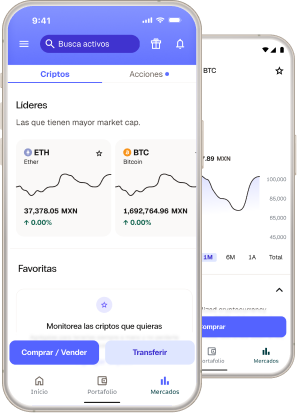In this lesson, you will learn about the key metrics used to analyze the performance of crypto-assets and the crypto market as a whole. We will get in detail about what is Market Cap, 24h volume, Supply, and much more.
What you need to know
- There are seven key metrics to understand the behavior and trustability of cryptocurrencies: market capitalization, 24h volume, ranking, circulating supply, total supply, all-time high, and total value locked.
- Market capitalization refers to the total value of the coin in USD, which is calculated by multiplying the asset circulating supply with the asset current price.
- 24h volume refers to the sum of all trades reported by all exchanges in the last 24h for that specific crypto-asset.
- Ranking, or popularity, refers to a combination of the crypto-asset market cap and its trading volume within 24h. Ranks are created by ranking companies, so the ranking factors may change from list to list.
- Circulating is an approximation of the total supply of tokens that are in the hands of the public and being traded. It is not rare that some tokens end up being burned or frozen in accounts. This metric ignores this number
- Total supply refers to the known amount of existing units of an asset.
- The all-time high, or ATH, is the highest price that the unit of a crypto-asset has reached since its foundation. This metric refers to the history of prices of the asset alone, and not compared to others.
- Total value locked refers to the number of tokens staked in a specific protocol. Tokens that users lock in the protocol to provide liquidity or security, and earn yields as rewards.
Introduction
It doesn’t matter how much money we have, to a certain point, we are all price-sensitive. Cheap and expensive are two key metrics that we use to make decisions in daily life. Are you in the grocery store? You are deciding if products are cheap or expensive. Are you buying a new phone? Cheap or expensive… This is a completely normal way to decide where and when to spend your money, except for when we are talking about crypto assets.
That is, price is important. But the price, alone, shouldn’t drive your decision-making. If the price of a token is “cheap”, as it is with memecoins like Shiba Inu and the Dogecoin that are priced in fractions of dollars (units that are smaller than USD cents), that doesn’t mean that the price will increase. And if the price is high, like with Bitcoin and Ethereum, that also doesn’t mean it can’t rise even higher.
When we are looking to buy and sell crypto, we need to go beyond our first instinct of thinking “it’s cheap, let’s buy, it’s expensive, let’s sell”, and look for other key metrics that have a large influence on the coin’s trustability, for example, the 24h volume, circulating supply and popularity.
In this lesson, we will introduce you to seven key metrics that will help you understand the assets that you are interested in buying, and explain in detail each one of them.
What is Market Capitalization (Market Cap)?
Traditionally, Market Capitalization, or Market Cap for short, is a metric used in the stock market to define how much a company is worth in USD. To calculate this metric, you need to multiply the number of outstanding shares of stock (shares that are active in the hands of the stockholders) by the price of one stock alone.
In the crypto market, Market Capitalization has a similar function: it refers to the total value of a crypto asset in USD. But instead of calculating the free-floating stocks, the calculation is made by the multiplication of crypto-asset’s current price by its circulating supply.
For example, let’s say that the price of an asset is USD 200, and then there are 2M assets in circulation currently. Hence, its market cap is USD 400M. This number, however, isn’t installed, any changes in the circulation supply or in the unit price affect directly the asset market cap. For example, if the price falls, the market cap reduces, if the supply grows, it increases, and so on.
How is the Price of a crypto-asset calculated?
It is tricky to calculate the precise price on a unit of a crypto-asset, because there isn’t a central ledger to make this calculation. So, to get to a consensus among all decentralized parts, the price is calculated by a volume-weighted average of market pair prices.
Translating, sites like CoinMarketCap have an algorithm that tracks all trades happening across the globe and trace an average price. A volume-weighted average, as it is the case, means that the higher the participation percentage of a market pair in the volume, the larger the weight of its practice price in the average.
For example, imagine that the pair LTC/BTC equals 10M a day, and the pair ETH/BTC just 8M, the price practice in trading LTC for BTC will weigh more. So we can expect that the price of BTC to be closer to the one presented in the pair LTC/BTC.
What is 24h Volume?
The 24h volume metric refers to the number of tokens traded in the last 24h. To find this number, we need to sum up every trade reported by every exchange. This metric will give us an overview of how popular the token is. This is an important indicator because it demonstrates the real size of the currency. Assets that present a greater volume tend to be less prone to fast price fluctuations. Although this is not a rule, usually assets that present greater volume tend to present more realistic price values.
What are crypto-assets Ranked?
Just like we have a rank for the most valuable companies in the world, we do for cryptocurrencies and tokens. Rankings like this are made by the initiative of private companies, so the ranking factors may change from one to another. However, there are constants among all ranking websites:
- Market cap;
- 24h volume.
Market cap, as we know, shows how well an asset is evaluated by the buyers, and the 24h volume, how much the asset is used on a daily basis. These metrics, combined, give us a picture of how much an asset is trusted and its degree of importance for the community.
Rankings can also combine different metrics. For example, a ranking can gather market cap variables with 24h volume data. For example, if the ranking developers wish to evaluate currencies performances by focusing on their respective daily activity (buy and sell) but without giving up on market cap’s consideration, they can do it by mixing the data from both sets. In this case they could provide a ranking that weights (on a ratio 60/40 for example) 24h volume over market cap data.
What is Total Supply?
The total supply is a sum of all tokens issued by the protocol of the crypto-asset. For some tokens and coins, there is a cousin metric for total supply that is the max supply. Let’s take Bitcoin as an example.
Currently, the total supply of Bitcoin is around 19M (as of March 2022), whereas its max supply is 21M. More tokens will continue to be issued and counted in the total supply until the max supply is reached.
What is Circulating Supply?
Not all tokens that exist are in circulation. In cases of protocols that allow staking, like in Cardano and Polygon, there is a certain amount of the tokens that are locked to help provide security and liquidity to the protocol. These tokens are not being traded, so they are not in circulation.
Other cases may include tokens that are locked in an account for determination of legal authority or tokens that are lost in accounts where people lost the private key. These too, are not in the hands of the public.
Circulating supply is an alternative metric for total supply, as it ignores tokens locked in protocols, or that aren’t available for trading for any other reason. This, however, is an approximation. It is hard to tell the exact number of tokens or coins that are in public hands.
Some websites, like CoinMarketCap, even use circulating instead of total supply to calculate the Market capitalization (Market Cap) for crypto-assets.
What is All-time High (ATH)?
All-Time High, or ATH, refers to the highest price an asset has reached since its listing or inception. Here, we aren’t considering the asset market cap, but the price of each unit.
But this metric itself isn’t so important. The fact that a token reaches ATH doesn’t mean that it can do it twice. The number is more of a vanity metric, used to show the “potential of a token” – however, it is still a cool metric to watch.
What is Total Value Locked (TVL)?
This metric is exclusive for blockchains, applications, or projects that allow staking in their protocol, used especially in the DeFi and yield farming markets. DeFi projects even use the metric to show to their users and supporters how well the protocol is doing. So you can find it easily on the websites of various services.
Simply put, total value locked (TVL) represents the number of tokens that users locked in the protocol to provide liquidity or security and earn yields in the process.
This is an important metric due mainly to two important facts:
- It presents the appeal the currency has in the market and among the community by staking – either because they want to receive passive income, or because they want to operate inside the ecosystem through governance or utility. Remember, if token owners did not believe in the project, they would sell those tokens instead of using them for stake;
- The greater the TVL, the more reliable the price of such a token tends to be. Because the value of tokens can vary, its TVL follows the same price fluctuation. Whenever a token price increases, its TVL’s will also increase.

